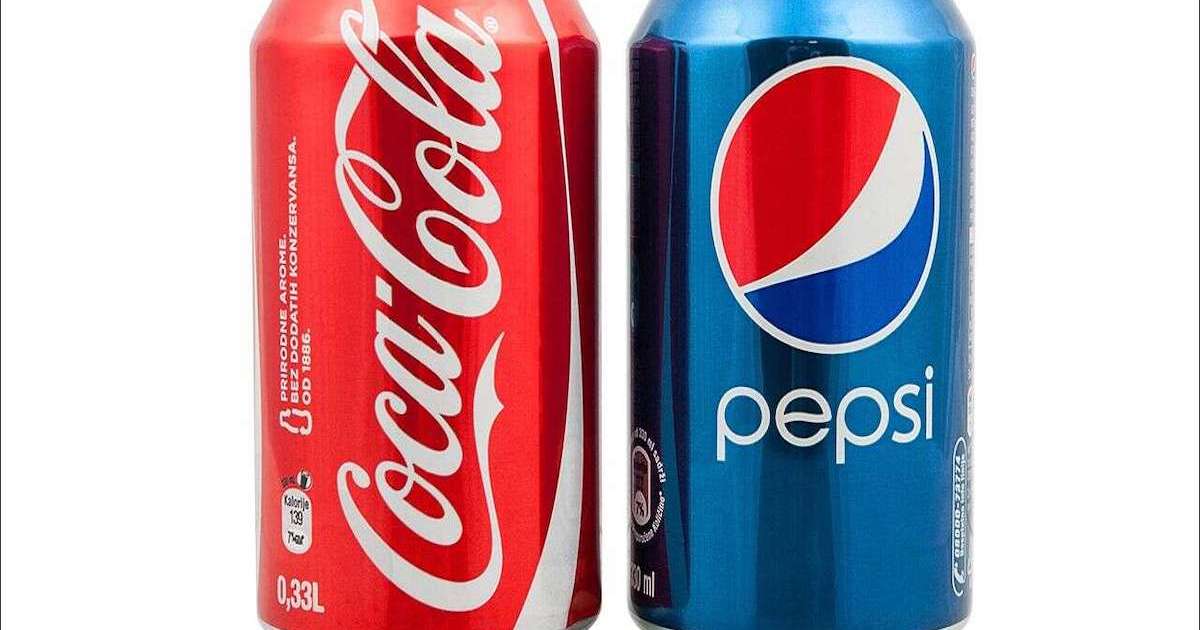The world disagrees about "Pepsi" and "Coca-Cola" as its difference over the best football clubs, at a time when the two companies use a similar chemical composition. But the strangest thing is that every lover of his drink is sure to choose, while he does not know a concrete reason for this.
Who wins the taste challenge?
The cola war caught in 1975 with Pepsi launching a challenge to test the bait without knowing which drink to drink. Although Pepsi and Coca-Cola have been competing for the largest market share since the establishment of Pepsi-Cola in 1899, the challenge marked a turning point in the global drink-best war.
The result of the taste test was decided in favor of Pepsi against Coca-Cola, according to the public. The Pepsi formula contains more sugar, making it the winner from the first sip. There are other ambiguous differences in the natural flavors included in both drinks. Despite these differences, the audience cannot tell the difference. But you can bring a packet from both drinks and notice the difference.
Once you open Pepsi and sip the first sip, you will feel a burning sensation in your throat because Pepsi relies on a strong acidic fruit flavor, unlike Coca-Cola, which is characterized by a calm vanilla taste. You will also notice that Coca-Cola is less sweet than Pepsi because it depends on sodium, and yet Pepsi remains less expensive and sweet at the same time.
Pepsi is also an ally of the diligent because of the higher caffeine content in the package than the other, and the air bubbles will not fly on your face while you drink it because it is less invasive compared to Coca-Cola, which uses more carbonated water, and some may prefer this due to a rumor that it helps to digest.
The World War of Cola
A significant portion of Coca-Cola's revenue is concentrated in Europe, the Middle East and Africa, while PepsiCo's core operations are in the United States of America. Another difference is that Coca-Cola is the largest beverage company in the world. But Pepsi's business diversified between drinks and fast food, with food accounting for 53% of its revenue in 2017, and customers who buy fast food often buy a complementary drink, and vice versa.
Usually, the consumer buys the two products even if he did not originally plan for this, which allowed Pepsi to convert many of its customers into double customers with the least possible expenses.
Both companies seem to have huge distribution strategies, yet they are still making their decisions quickly and randomly in an effort to adapt to consumer habits. The competition affected the decisions of the two companies, beginning with Pepsi winning the challenge that pushed Coca-Cola to change its chemical composition until it lost many of its fans and Pepsi sales increased.
But bad luck was an ally of Pepsi to a greater degree and astronomical number of slips committed by the company in the past years, especially in the management of its brand and the way in which it presented its product, which caused an early announcement from Fortune magazine in the end of the nineties that "Coca-Cola" Kick Pepsi and win the war. "
That victory did not last until the mid-1990s, due to Pepsi 's note of the direction of the most successful long - term strategy for the Cola War under the slogan "collect and earn". Consumers can collect Pepsi points on packages and cups and exchange them for Pepsi products for free. It is also her most important success in marketing water bottles after the Americans' tendency to count calories and lead a healthy life.
Which audience do you like the most?
Samuel McClure conducted a study to find the objective reasons behind the public's preference for one drink over another, despite their similarities. Although the largest proportion of respondents were loyal to Coca-Cola, McClure measured behavioral preferences transparently through taste tests without the respondent knowing which drink. It was found that people were equally divided in their Coca-Cola and Pepsi preferences in the absence of information on which drink.
The study confirmed that the brand has more value than the bait for the public, as was the reason Coca-Cola won that war in the United States. In 2011, the Coca-Cola brand, with its high and low calorie versions, captured the market.
Today the Red Cola can is one of the most popular products in the world. Throughout its history, Coca-Cola has followed the "fair play" approach. She interested in playing the nostalgia and happiness in her ads, and being a partner in family events and the "wig" of friends, and interested in marketing to herself as a brand in advertising campaigns that achieved huge success.
Coca-Cola has focused more on the beverage industry, and has not touched on fried chicken and potato slices like it, realizing that soda will remain the most important sales of $ 81 billion in America alone, to outpace sales of mineral water almost fourfold.
The market Pepsi left for Coca-Cola made it more creative and interested in its authenticity on the one hand, and the young man always directed her on the other hand after chasing the millennials with modern flavors such as lemon and orange, which Pepsi has been trying to catch up with in the past two years.

